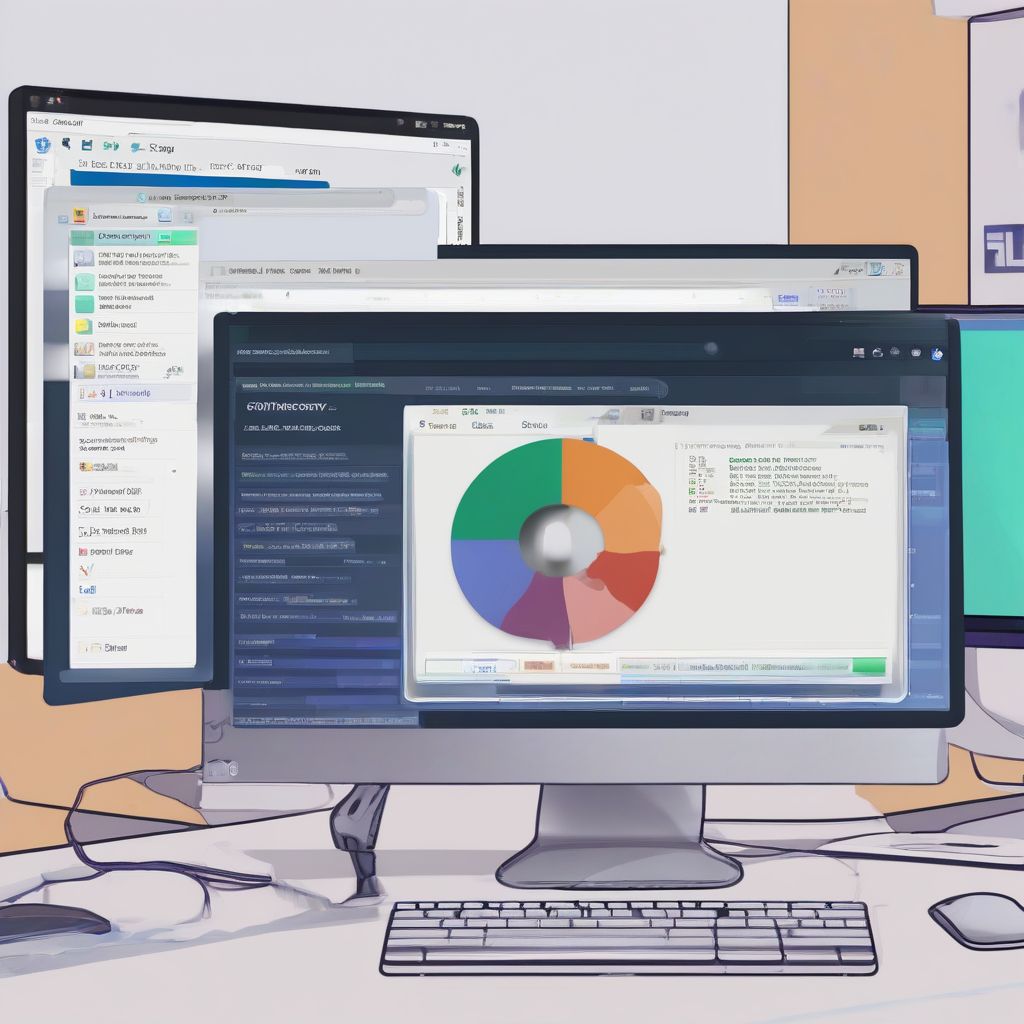Losing access to precious files and data stored on your hard drive can be a nightmare. Whether it’s due to accidental deletion, hardware failure, or a nasty virus attack, the panic of losing important information is universal. But before you resign yourself to the worst-case scenario, there’s hope! “Restore Data Hard Drive” are more than just buzzwords; they represent a lifeline in the digital age. This article will guide you through the ins and outs of hard drive data recovery, providing you with the knowledge and resources to navigate this challenging situation.
Understanding Hard Drive Data Loss: When Your Data Takes an Unexpected Detour
Before diving into the solutions, it’s crucial to understand the different ways data loss can occur. This understanding can help you take preventive measures and react more effectively when faced with a data crisis.
Common Causes of Hard Drive Data Loss:
- Accidental Deletion: We’ve all been there – accidentally hitting the delete button and sending a crucial file to the abyss of the Recycle Bin (and sometimes even emptying that!).
- Hardware Failure: Hard drives, like any mechanical device, have a lifespan. Physical damage from drops, spills, or simply wear and tear can lead to data inaccessibility.
- Viruses and Malware: Malicious software can corrupt your files, making them unusable and rendering your hard drive inaccessible.
- Power Surges: Sudden power outages or surges can interrupt write operations on your hard drive, leading to data corruption and loss.
- Software Corruption: Operating system errors or faulty software installations can also lead to data loss scenarios.
Restore Data Hard Drive: Your Options Explained
Now that you know what you’re up against, let’s explore the methods to potentially restore your lost data:
1. Data Recovery Software: Your Digital First Responder
Data recovery software acts like a digital detective, scanning your hard drive for remnants of deleted or lost files. These tools come in varying degrees of sophistication and price points, catering to different levels of data loss severity.
Popular Data Recovery Software Options:
- Recuva: A user-friendly option known for recovering accidentally deleted files.
- EaseUS Data Recovery Wizard: Offers a comprehensive suite of recovery tools, suitable for various data loss scenarios.
- Disk Drill: Available for both Windows and Mac, Disk Drill is a robust tool known for its advanced recovery capabilities.
taigamemienphi.me/wp-content/uploads/2024/08/data-recovery-software-66c5ae.jpg" alt="Data Recovery Software Interface" width="1024" height="1024">Data Recovery Software Interface
2. Professional Data Recovery Services: When Expertise is Key
For severe cases of data loss, such as physical hard drive damage or complex data corruption, seeking professional data recovery services is often the most reliable solution. These services employ specialized techniques and equipment to retrieve data from damaged or inaccessible storage devices.
When to Consider Professional Data Recovery:
- You’ve experienced a hard drive crash with clicking or grinding noises.
- DIY data recovery attempts using software have been unsuccessful.
- The data is highly sensitive and requires expert handling.
Choosing a Reputable Data Recovery Service:
- Look for certifications and industry affiliations (e.g., American Society of Digital Forensics & eDiscovery).
- Check customer reviews and testimonials for insights into their success rate and service quality.
- Request a clear price quote and service agreement upfront.
3. Preventive Measures: Shielding Your Data from Future Threats
Prevention is always better than cure! Implementing robust data backup strategies and following best practices can significantly minimize the risk of data loss:
- Regular Backups: Back up your essential files regularly to an external hard drive, cloud storage, or both.
- Cloud Storage: Cloud services like Google Drive, Dropbox, and OneDrive offer seamless data synchronization and backup options.
- External Hard Drives: Invest in a reliable external hard drive with sufficient storage capacity to back up your entire system.
- Antivirus Software: Install reputable antivirus software and keep it updated to protect your system from malware threats.
- Handle Your Hard Drive with Care: Avoid physical shocks, extreme temperatures, and moisture to prolong the life of your hard drive.
FAQs about Restoring Data from a Hard Drive
Can I recover permanently deleted files from my hard drive?
The answer depends on the method of deletion and the actions taken afterward. When you delete a file, it’s not immediately erased from your hard drive. Instead, the space it occupies is marked as available for overwriting. Using data recovery software, you might be able to recover permanently deleted files if the data hasn’t been overwritten.
How much does professional data recovery cost?
The cost of professional data recovery varies depending on the severity of the damage, the type of storage device, and the service provider. Simple logical recoveries might range from a few hundred dollars to over a thousand dollars for complex cases involving physical damage.
Can I recover data from a physically damaged hard drive?
While challenging, it’s sometimes possible to recover data from physically damaged hard drives. However, attempting DIY data recovery on a physically damaged drive is not recommended as it can lead to further damage and data loss.
